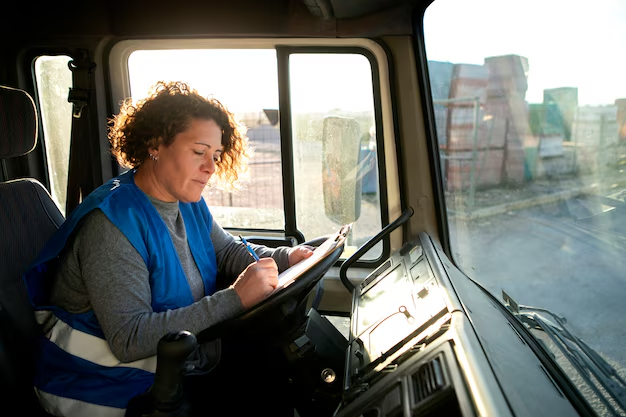Unlocking Access to Federal Transit Grants: A Rural Community's Guide 🚍
Navigating the world of federal transit grants can seem overwhelming, especially for rural communities seeking to enhance their transportation infrastructure. These grants serve as essential lifelines that foster economic growth, improve accessibility, and provide vital connections for residents in less populated areas. For rural communities, understanding the intricacies of these funding opportunities is crucial. This guide is designed to demystify the process, offering practical insights and clear steps to help rural areas tap into federal transit resources effectively.
Understanding Federal Transit Grants: The Basics
What Are Federal Transit Grants?
Federal transit grants are financial resources provided by the U.S. government to support public transportation projects. These grants aim to improve transit infrastructure, increase accessibility, and enhance the quality of transportation services across the country. For rural communities, they can help bridge the gap between isolated areas and urban centers, enhancing mobility for residents who rely heavily on public transportation.
Why Are They Important for Rural Areas?
- Accessibility: These grants help fund transportation options that connect rural areas to essential services such as healthcare, education, and employment.
- Economic Development: Improved transit systems can attract businesses, boosting local economies.
- Quality of Life: Reliable transportation enhances residents' quality of life by reducing travel barriers.
Key Federal Transit Grant Programs for Rural Areas
Formula Grants for Rural Areas (Section 5311)
The Formula Grants for Rural Areas, commonly known as Section 5311, provides funding to enhance public transportation in rural regions. This program supports various activities, including planning, operations, and capital projects.
- Eligibility: Rural areas with populations under 50,000.
- Funding Uses: Can be applied towards transit-related expenses such as vehicle purchase, facility construction, and operating assistance.
Tribal Transit Program
This program specifically targets Native American tribes, offering financial aid to develop, improve, or maintain tribal transportation systems.
- Focus: Increasing access to transit services on tribal lands.
- Benefits: Allows tribes to manage their transit services, ensuring they meet community-specific needs.
Integrated Mobility Innovation (IMI) Demonstration Program
The IMI program encourages innovative projects that improve transit services by integrating technology and data-driven solutions.
- Innovation Focus: Projects that utilize smart transportation technologies.
- Objective: Enhance the efficiency and appeal of public transit systems in rural areas.
The Application Process: A Step-by-Step Guide
Step 1: Identify Local Needs
Begin by evaluating your community's specific transit needs. Engage with stakeholders, conduct surveys, and review existing transportation infrastructure.
Step 2: Gather Essential Information
Before applying for any grant, ensure you have all necessary details, including demographics, current transit services, and projected impact of proposed projects.
Step 3: Choose the Right Grant Program
Different programs cater to specific needs and goals. Select the grant that aligns best with your community's priorities and resources.
Step 4: Prepare a Strong Proposal
Craft a detailed proposal that clearly articulates your project’s objectives, benefits, and feasibility. Include budget plans, timelines, and expected outcomes.
Step 5: Submit Application
Follow the application guidelines carefully. Ensure that all required documents are complete and submitted before the deadline to avoid disqualification.
Strategic Tips for Successful Applications 📋
✅ Understand Grant Criteria
Each federal grant has specific criteria and objectives. Tailor your application to meet these needs effectively.
✅ Build Partnerships
Collaborate with local governments, organizations, and businesses to strengthen your proposal. Partnerships can enhance credibility and provide additional resources.
✅ Highlight Community Impact
Showcase how the grant will directly benefit your community, emphasizing improvements in access, economic opportunities, and environmental sustainability.
✅ Keep Up with Reporting
Successful grant management involves timely reporting and communication. Ensure that your team is prepared to provide updates and performance metrics as required by the funding agency.
✅ Stay Informed
Regularly check for new funding opportunities and policy changes. Staying informed will enable your community to adapt and plan for future funding rounds.
Real-World Applications: Success Stories from Rural Areas 🌟
Case Study: Enhancing Mobility in Small Town America
In a small Midwestern town, local officials successfully utilized Section 5311 funds to develop a new bus route connecting residents to urban centers, shopping areas, and healthcare providers. The project not only improved accessibility but also sparked local economic growth by increasing foot traffic in town centers.
Tribal Transit Program: A Path to Self-Sufficiency
A Native American tribe leveraged funds from the Tribal Transit Program to launch a new shuttle service. Not only did this project serve the immediate community, but it also provided employment opportunities, thus fostering economic resilience.
Visual Summary: Key Takeaways 📊
| Tip | Explanation |
|---|---|
| Assess Community Needs | Identify the specific transit challenges facing your rural area. |
| Select Appropriate Grants | Ensure the grant aligns with your project goals and community needs. |
| Develop Strong Partnerships | Leverage local partnerships to bolster your grant application. |
| Effective Proposal Writing | Craft proposals that are clear, detailed, and aligned with grant goals. |
| Proactive Reporting | Maintain transparency through regular updates to grant providers. |
| Continuous Learning | Stay informed about evolving grant opportunities and requirements. |
Federal transit grants are vital tools for rural communities striving to improve their public transportation systems. By understanding the nuances of these programs and following strategic application practices, rural areas can successfully secure funding, boosting accessibility, economic growth, and overall quality of life for their residents. Empowered by these insights, rural leaders can take bold steps towards a more connected future, closing the gap between isolated communities and the expanding opportunities beyond their borders.

Related Topics
- A Comprehensive Guide To Crime Victim Assistance
- A Comprehensive Guide To Economic Infrastructure Development
- A Comprehensive Guide To Low-Income Housing Repair Loans And Grants
- A Comprehensive Guide To The Emergency Solutions Grants Program
- A Comprehensive Guide To The Senior Companion Program
- A Comprehensive Guide To The State Childrens Health Insurance Program
- A Comprehensive Guide To The TANF Program For Needy Families
- Additional Child Tax Credit
- Adoption Assistance
- Adult Basic Education Grants